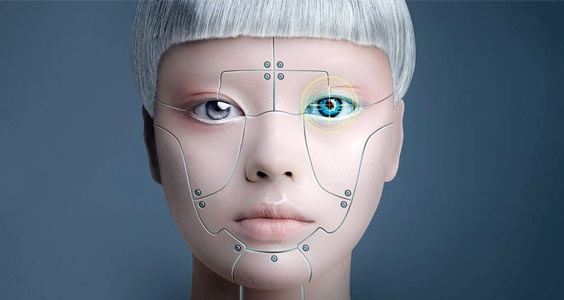The NIH #3D Print Exchange for #Biomedical #Sciences #video [#geekgirl]
The National Institutes of Health 3D Print Exchange is an online repository of 3D printable files related to the biomedical sciences.
Source: NIH
@_ANAT 2018 Synapse recipients Jon McCormack (@jonmcc) & Natalie Alima #robots [#geekgirl]

Image: Bio scaffold: orchestrating the growth and degradation of living organisms. Photo courtesy the artist.
Architectural artist, Natalie Alima, and Monash University’s SensiLab Director, Professor Jon McCormack, will explore ways of controlling and orchestrating biological materials and organic chemistry, using #robotic intervention, algorithmic design and advanced digital fabrication, in order to advance the potential for living and breathing inhabitable designs.
Source: ANAT
Human+ the #future of our species #robots #cyborgs #VR #genetics [#geekgirl]

Advances in genetic engineering, biotechnology and nanotechnology that not long ago seemed purely science fiction are now real. Cyborgs, superhumans and clones are alive amongst us today. What does it mean to be human now? What will it feel like to be a human a hundred years from now? Should we continue to embrace modifications to our minds, bodies and daily lives, or are there boundaries we shouldn’t overstep?
HUMAN+ The Future of Our Species, ArtScience Museum’s new cutting-edge exhibition, explores the possible future paths of our species. It asks what it means to be human in a world of artificial intelligence, lifelike robots and genetic modification. It probes the social, ethical and environmental questions raised by using technology to modify ourselves. Will virtual reality be the new reality? What would happen if a robot knew what we wanted before we knew ourselves? How might we modify ourselves to adapt to an environment that we are drastically transforming? Is longevity a noble aspiration or a terrible threat for the planet? In the future, who will have ownership of our genetic information?
Featuring work by Oron Catts, Ionat Zurr, Stelarc, Nina Sellars and many more. Opens May 20, 2017
Source: Marina Bay Sands, Singapore
#cellF is the world’s first #neural #synthesizer a #wetalogue with #cells [#geekgirl]
cellF is the world’s first neural synthesizer. It is a real “wet-alogue” Synthesizer. cellF’s “brain” is made of a biological neural network that grows in a Petri dish and controls in real time an array of analogue modular synthesizers that were custom made to work in synergy with the neural network. It is a completely autonomous, wet and analogue instrument.
In 2012, Guy Ben-Ary received a fellowship to develop a biological self-portrait, and decided to portray one of his juvenile dreams: to become a rock star.
Guy Ben-Ary had a biopsy taken from his arm, then he cultivated his skin cells in vitro in the labs of SymbioticA at UWA, and using Induced Pluripotent Stem cell technology, he transformed his skin cells into stem cells. When these stem cells began to differentiate they were pushed down the neuronal lineage until they became neural stem cells, which were then fully differentiated into neural networks over a Multi-Electrode Array (MEA) dish to become – “Ben-Ary’s external brain”.
The MEA dishes that host Ben-Ary’s neural networks consist of a grid of 8×8 electrodes. These electrodes can record the electric signals (action potentials) that the neurons produce and at the same time send stimulations to the neurons – essentially a read-and-write interface to the “brain”.
For more info – http://guybenary.com/cellf
Being featured by HKW – Fri, May 12, 2017
Technosphärenklänge #3: Concerts
With cellF, Evelina Domnitch, Dmitry Gelfand, Schneider TM and Robert Henke
